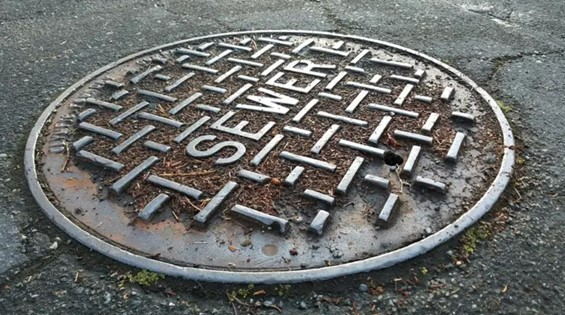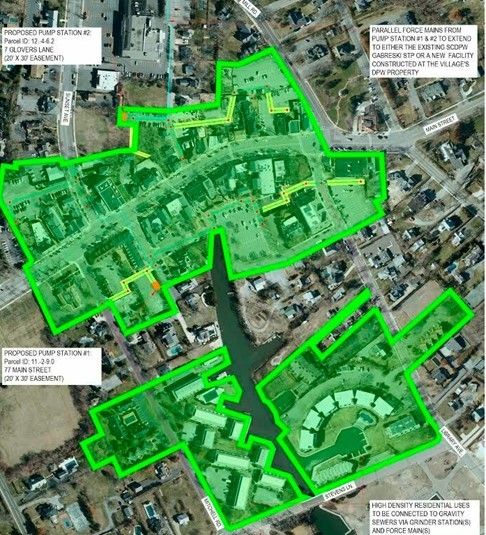Long Island Nitrogen Action Plan (LINAP) – Newsletter |
Suffolk County Coastal Resiliency Initiative (SCCRI)In 2015 Suffolk County was awarded $390 million in funding through the Governor’s Office of Storm Recovery to install sewers in communities that are in unsewered, low-lying areas along the County’s south shore that had been inundated by Superstorm Sandy. The sewer projects, known as the Suffolk County Coastal Resiliency Initiative, marks the largest investment in water quality infrastructure in the County in more than 40 years and will eliminate over 7,000 cesspools and septic systems in the Carlls River Watershed (North Babylon, West Babylon, Wyandanch), Patchogue River Watershed (Village of Patchogue), the Forge River Watershed (Mastic) and Connetquot River Watershed (Oakdale ); improving water quality, boosting economic development and protecting against storm surges by strengthening wetlands. Construction is already underway in the Carlls River and Forge River Watershed. Both projects will use low-pressure sewer systems, that include pumps buried in front of each house; a method that is cost effective and causes less construction disruption. The Carlls River project is anticipated to be completed in 2024, with Forge River to follow in 2026. In the Village of Patchogue, contracts have recently been awarded and groundbreaking is expected in late fall or early winter. In Oakdale construction is expected to be complete in 2024.
Suffolk County officials and construction leaders at the groundbreaking ceremony for the Carlls River Watershed sewer expansion project. Photo credit: Suffolk County Smithtown and Kings Park Sewer ExpansionSuffolk County has also received grant money from the State to expand sewers in the Kings Park and Smithtown Business Districts. Construction on the Kings Park business district sewer expansion is expected to break ground this year. The expansion in Kings Park will provide approximately 120 new sewer hookups covering downtown businesses, homes and co-ops. Bids for the Kings Park Business District Project opened in August. In Smithtown, Suffolk County legislators recently approved a $1.7 million land purchase critical to the construction of sewers on Main Street in Smithtown. The 17-acre parcel will be used as a leaching field to dispose of treated Smithtown wastewater released from a nearby County sewage treatment plant. The sewer expansion will serve dozens of small commercial properties, large shopping centers, office buildings, and an assisted living facility. Construction is scheduled to begin soon.
Huntington Station Hub Sewer ProjectEarlier this year, the Town of Huntington allocated $22,209,010 million in American Rescue Plan Act (ARPA) funding for the Huntington Station Hub Sewer Project. The town will transfer its entire share of ARPA funds, to Suffolk County for the construction of the project–the first project funded under the county’s newly created Wastewater Infrastructure Fund. The Huntington Station Hub Sewer Project plans for installation and connection to sewers for both residential and commercial properties. The project will connect approximately 229 parcels in the vicinity of the Huntington Railroad Station and south along NYS Route 110 corridor. Additionally, the sewers would also serve several commercial blocks of Depot Road and industrial land along the Long Island Railroad tracks. The lack of sewers in Huntington Station has long been an obstacle to revitalization efforts by both the County and the Town. This expansion will allow downtown Huntington Station to continue to evolve as a major economic center of Long Island. Westhampton Beach Sewer ProjectWesthampton Village received grants totaling $11 million from the New York State Department of Environmental Conservation, the New York State Environmental Facilities Corporation, and the Southampton Town Community Preservation Fund to install sewer in the Village’s downtown business district. Included in the project are the installation of sewers in the village’s downtown business district, as well as pumps and more than 2.6 miles of pressurized piping that would carry the raw sewage to a treatment plant at Francis S. Gabreski Airport in Westhampton Beach. Suffolk County, which owns the airport, has agreed to treat up to 60,000 gallons of effluent each day at the existing plant for the village, which means a new plant would not be necessary. The Main Street renovation also includes plans related to enhancing stormwater management. The first phase of the project, the actual construction of the wastewater collection system, is on schedule and projected to be finished this year. The second phase of the project will include retrofitting the existing treatment process at the Gabreski site with new and updated sewer treatment technology. The plans for the upgrades were approved by the County earlier this year. Contracts were awarded in May and work began this past summer. A study paid for by the Village projected that connecting the business district to sewers would eliminate roughly 5,000 pounds of nitrogen annually that enter village waterways, reducing waste that pours into local waterways by 24 percent.
Westhampton Sewer Service Map. Image credit: Village of Westhampton Beach. Bergen Point Wastewater Treatment Plant Expansion and Outfall Replacement ProjectThe Bergen Point Wastewater Treatment Facility (WWTP) has undergone significant upgrades including the replacement of three pumping units, installing a new fourth pump, new electrical controls, discharge piping and improvements to the Plant’s infrastructure to protect against future flooding and other natural disasters. As part of the project for overall improvements Bergen Point has increased its treatment capacity by 10 million gallons per day. In addition, a 14,200-foot-long section of the outfall that runs from Bergen Point under the Great South Bay and under Jones Beach was failing and needed replacement. With $187.78 million in funding from the Department of Housing and Urban Development and the Community Development Block Grant Disaster Recovery Program, along with low interest loans from the New York State Environmental Facilities Corporation, a new pipe has been constructed that will take the treated wastewater 3.4 miles out in the Atlantic Ocean. The new pipe is essential to protect the Bay already threatened by algae blooms and other pollution issues. Suffolk County Sewage Treatment Capacity StudySuffolk County recently released a request for proposals for engineering services to prepare a Sewage Treatment Plant (STP) capacity study. A recommendation of the Suffolk County Subwatersheds Wastewater Plan (SWP), the STP capacity study will evaluate 24 private STPs throughout Suffolk County to determine which STPs have additional capacity. Private STPs with additional capacity are uniquely positioned to provide both environmental protection through the connection of adjacent unsewered parcels to advanced wastewater treatment and to help facilitate targeted economic development. This concept was demonstrated in the SWP wherein a STP pilot area evaluation for the Hamlet of Mattituck business district demonstrated that a small STP could reduce existing nitrogen loads by over 70 percent while allowing an approximate 20 percent increase in growth for local businesses. Initial recommendations from the STP capacity study are preliminary scheduled to be released in early 2023. To sign up for our LINAP Newsletter, visit our LINAP webpage or click here. |
Footer
Contact
STAY INFORMED
Enter your email address to receive email updates from the LIRPC:





